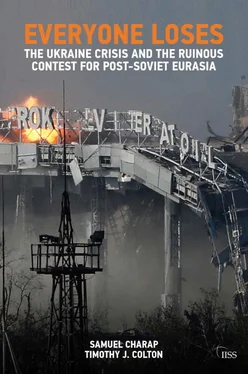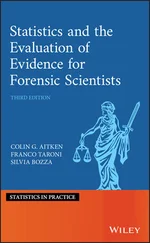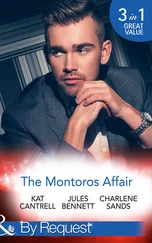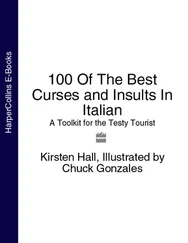Also reflective of lowered inhibitions was the American decision to build a bridge to the Russo-sceptic GUAM group. In December 2002 the US and the GUAM foreign ministers entered into a framework programme ‘of trade and transport facilitation, ensuring border and customs control, combating terrorism, organized crime and drug trafficking’. The centrepiece was a US-bankrolled GUAM Virtual Center designed to conduct activities along these lines. The financial commitment was trifling, and the impact even more so, but that did not keep Russia from seeing it as a suspicious probe. [84] Online records note expenditures on GUAM/GUUAM in fiscal years 2001 and 2002, without giving exact numbers. There is no annotation for 2003, but in fiscal year 2004 there are entries of US$250,000 through Department of State accounts and US$520,000 through the Department of Homeland Security. The 2002 framework agreement can be found at http://guam-organization.org/en/node/461 .
One effect of this US policy shift was to embolden Russia’s neighbours to bid more overtly for Western support and for inclusion in Western institutions. A pair of In-Betweens blazed a declaratory trail toward the EU and even NATO, where Russian tolerance for deviation from the status quo would certainly be scantiest. In 1998 Ukraine’s president Kuchma asserted EU membership as a strategic objective, and in 2002 let it be known that he wanted his country sooner or later to join the NATO alliance; Shevardnadze staked similar claims for Georgia in 1999 and 2002, respectively.
In a third country, Moldova, a bruising scandal broke out in 2003 over resolution of the Transnistria conflict. At the invitation of the Moldovan president, Vladimir Voronin, a senior adviser to Putin, Dmitry Kozak, drafted with local allies a plan to bring the mutinous district back into the fold by adopting a new federal constitution for the country. The Kozak Memorandum would have resulted in an asymmetric federation; Transnistria and Gagauzia (the small homeland of a Turkic-speaking people) were to be granted considerable autonomy along with a veto over some central decisions via a new upper house of parliament. In a late addition, Russian peacekeepers, and not the multinational force the Moldovan authorities preferred, were to be stationed in Transnistria until 2020. Western officials, prominently Javier Solana, the EU’s high representative for common foreign and security policy, were vehemently against the plan, while OSCE mediators could not arrive at a position. Voronin, having given preliminary approval to the scheme, torpedoed it in November 2003. His decision came as a Kremlin airplane was preparing to ferry Putin to Chisinau to witness the signing. As William Hill, then the head of the OSCE mission to Moldova, later recalled, ‘What was for most Western capitals a relatively minor incident for the Russians was a personal affront to their president and a denial of Russia’s right to play an independent political and diplomatic role in a part of the world that had once been theirs exclusively.’ [85] Hill, Russia, the Near Abroad, and the West , p. xii.
For Moscow, unease over Western involvement in the debacle in Moldova turned into alarm when taken together with trends in several other nearby states. Georgia, Ukraine – the premier In-Between, and Kyrgyzstan were rattled around this time by ‘colour revolutions’ propelled by mass protest and civil resistance. The three revolutions came within 18 months: the Rose Revolution in Georgia in November 2003, which unseated Shevardnadze; the Orange Revolution in Ukraine in December 2004, after a disputed national election to replace Kuchma, which denied the presidency to Kuchma’s associate, Viktor Yanukovych; and, in April 2005, the Tulip Revolution in Kyrgyzstan, in which perennial leader Askar Akaev fell from power. The events in Bishkek, Kyrgyzstan, were reminiscent of those in Tbilisi and Kyiv but otherwise had scant international resonance. The same could not be said of the Rose and Orange revolutions. Shevardnadze and Kuchma had thumbed their noses at Russia on NATO, but they had been senior members of the Soviet nomenklatura , and Kuchma had played along with Russia’s SES initiative. Their replacements – Mikheil Saakashvili and Viktor Yushchenko – were pro-Western nationalists who would necessarily be more of a handful for Moscow. Russia played go-between in Georgia but in Ukraine unabashedly took Yanukovych’s side, with Putin making two well-publicised visits to Kyiv during the election campaign, the Kremlin paying for pro-Yanukovych polling and electoral activities, and a premature congratulatory phone call from Putin to Yanukovych after the disputed second-round vote. American and European democracy-promotion programmes had funded some of the non-governmental organisations (NGOs) and movements that swept Saakashvili and Yushchenko into office; Western governments and media effusively embraced the new governments. That was enough for Russian officials to dismiss them as lapdogs of the West, and above all of the US, which Putin indicted for a high-handed foreign policy boxed in ‘beautiful, pseudo-democratic phraseology’. [86] ‘Vystuplenie na konferentsii Memorial’nogo fonda Dzhavakharlala Neru’, 3 December 2004, http://kremlin.ru/events/president/transcripts/22720 .
The interactions described hitherto added up to a messy equilibrium among the main external actors in post-Soviet Eurasia. In time, the equilibrium was revealed to be fragile. The Cold Peace got colder and the interaction in the region more and more unmistakably adversarial. Discord erupted with greater frequency, at a shriller pitch and with more animosity.
CHAPTER TWO
Contestation entrenched
A decade and a half after the settlement-that-wasn’t marked the end of the Cold War, the best opportunity to forge a new, inclusive order for Europe and Eurasia had passed. The year 2004 brought the ‘big bang’ enlargement of Euro-Atlantic institutions, ushering the Baltic states and several adjacent countries into NATO and the EU. [1] Besides the two small island nations of Malta and Cyprus, all the new EU members were either former Soviet republics (Estonia, Latvia and Lithuania), former communist states in East Central Europe (the Czech Republic, Hungary, Poland and Slovakia) or the Balkans (Slovenia, once a constituent republic of Yugoslavia). NATO took in Bulgaria, Estonia, Latvia, Lithuania, Romania, Slovakia and Slovenia in 2004. Bulgaria and Romania were to accede to the EU in 2007 and Croatia in the Balkans to NATO in 2009 and the EU in 2013.
The Western umbrella now extended deep into the former imperium of the Soviet Union. But at that time one could find only hints of the ferociously adversarial behaviour that yielded a hot war in Ukraine a decade later. Russia was far from happy with what had transpired since 1989, and often exuded resentment. Yet it had a multilayered and interdependent relationship with the EU and its member states, a functional dialogue with the US and even some cooperation with NATO. Although Moscow was on guard about Western activity in post-Soviet Eurasia, the competition was still low-grade in comparison with today.
A few short years after the colour revolutions, tensions over geopolitics and geo-ideas reached unheard-of levels, a process that culminated in a five-day war between Russia and Georgia in August 2008. The focus then moved to geo-economics, as the EU became more active and Russia finally got serious about its plans for regional economic integration. While contingent factors temporarily eased tensions during the ‘reset’ interval, contestation had now been entrenched.
The Cold Peace unravels
The tenuous and mostly informal arrangement in post-Soviet Eurasia that emerged from the 1990s had reflected Russia’s relative dominance in the region, constraints on Russia–West competition, and a shared sense that Russian institutions and practices were gradually converging with Western ones. Vladimir Putin, in his first few years in power, subscribed, at least rhetorically, to the logic of convergence, but by 2003–04 he was moving the Russian political system down a more authoritarian path. The ponderings of officials and intellectuals (Western and Russian alike) about the eventual drawing of Russia into the West’s institutional web had not yet died out, but they were looking more and more implausible.
Читать дальше











